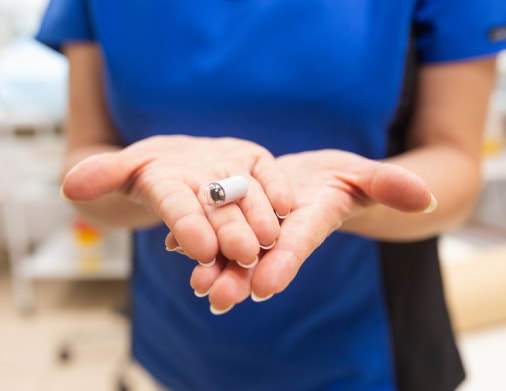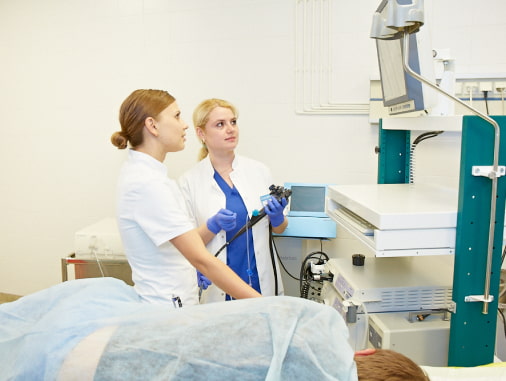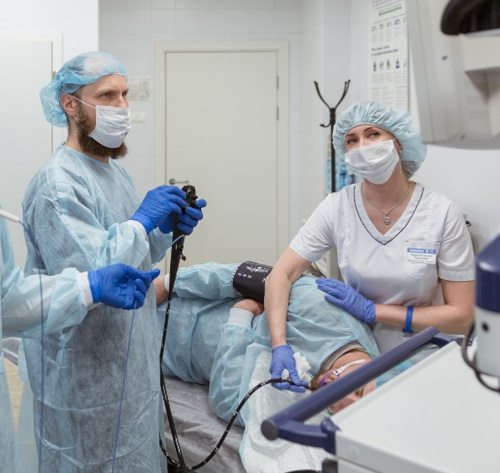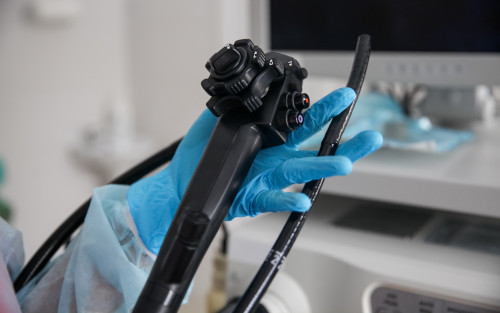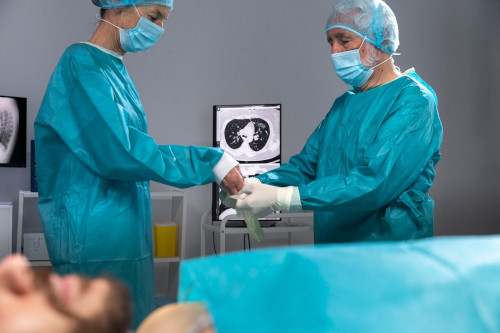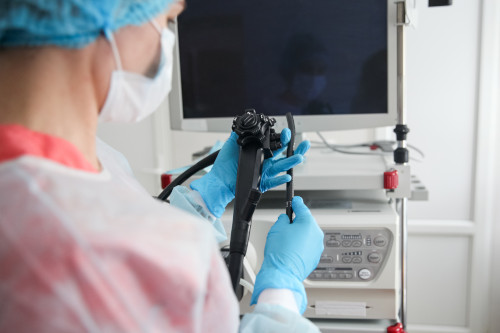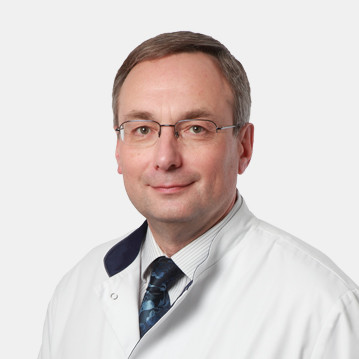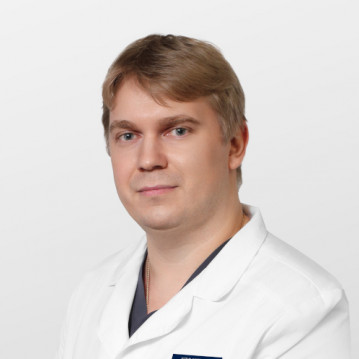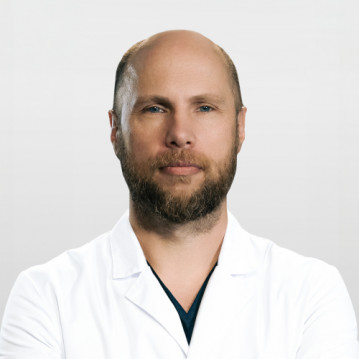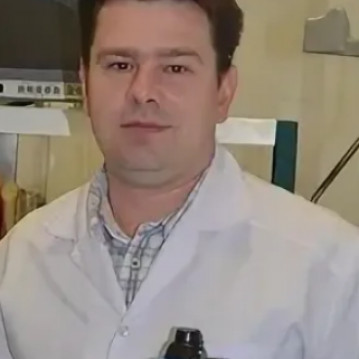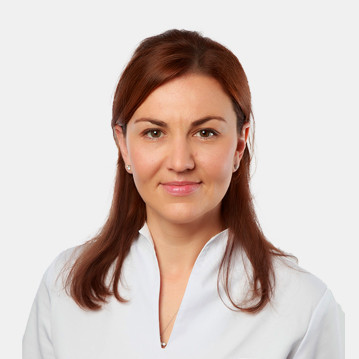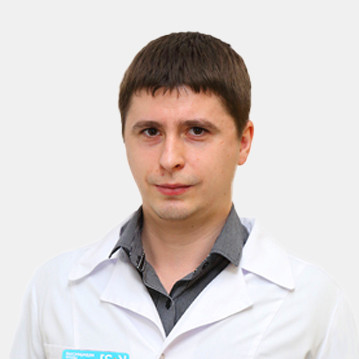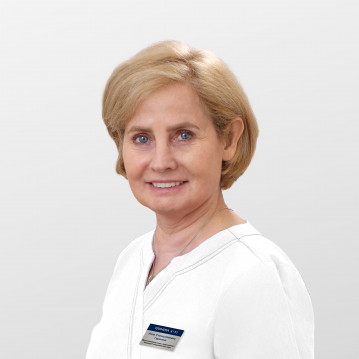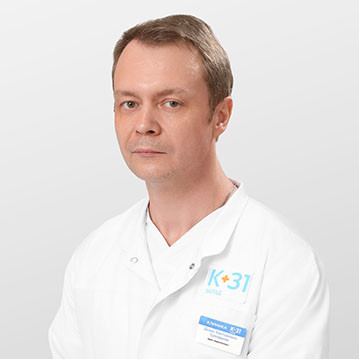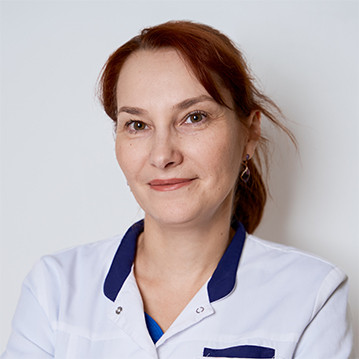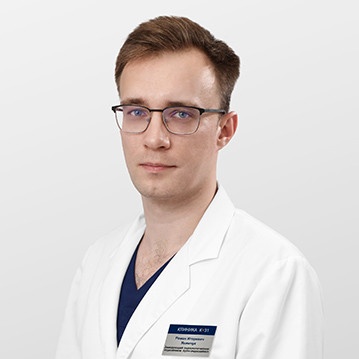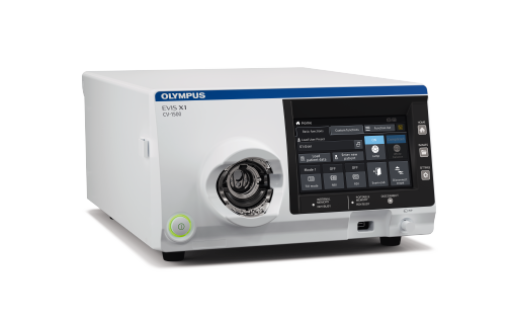K+31 employs endoscopists with extensive experience in performing both high-class diagnostics and a wide range of endoscopic medical procedures, including under sedation (in sleep).
The endoscopy department provides highly effective diagnostics and treatment of diseases: organs of the gastrointestinal tract (esophagus, stomach, small and large intestine), pancreatobiliary zone (ductal systems of the gallbladder and pancreas), tracheobronchial tree. The use of endoscopic inspection techniques with magnification, narrow spectrum light (NBI) and chromoscopy greatly expands the diagnostic capabilities, allowing you to see the slightest changes in the mucous membrane. Timely and high-quality endoscopy allows you to detect changes in the early stages, thereby preventing the development of an advanced stage of diseases, including cancer.
Modern equipment in K+31 allows you to perform high-quality research and create the most comfortable conditions for the patient, while minimizing the discomfort from the procedure. With increased sensitivity, fear, low pain threshold, we can conduct a study with anesthesia (sedation) under the control of a highly qualified team of anesthesiologists.

specialists

endoscopes

endoscopic procedures
Video capsule endoscopy is a modern method for examining the intestines.
This diagnostic allows you to thoroughly examine the inside of the small (capsule enteroscopy) and large (capsule colonoscopy) intestines completely:
- painless;
- non-invasive;
- invisible to the patient;
- without interruption from everyday life.
In K+31, any endoscopic examination can be performed under the most comfortable conditions of sedation - a 10-minute drug sleep.
It is absolutely safe, because. modern drugs created specifically for this purpose do not belong to narcotic analgesics. Anesthesiologist K+31 carries out an individual selection of the drug and controls the procedure at all its stages.
The patient sleeps during the procedure without experiencing any discomfort. After waking up, discomfort is completely absent and after 30 minutes you can return to your usual activities.
Features of research in K+31
All endoscopic stands are equipped with the ability to perform video recording of examinations and capture images.
Each protocol includes photographic images of the main anatomical regions and changes identified during the study; the endoscopic base has a video archive, which is very convenient for constantly observed patients.
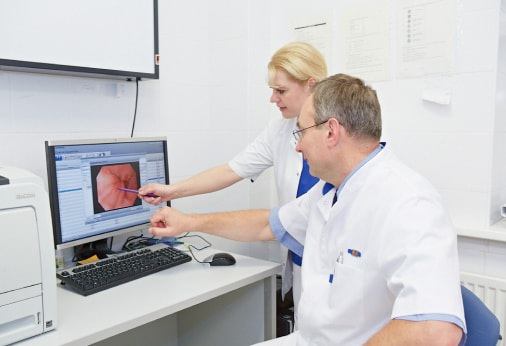
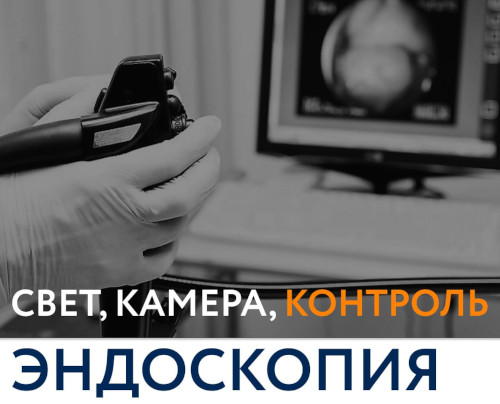
Have you already had an endoscopic examination of the colon?
Did you know that there is a guideline containing recommendations of the European Society of Gastrointestinal Endoscopy? This is the main document by which you can understand whether an endoscopy has been performed well.
Some of the main indicators of a well-performed colonoscopy, according to this guideline, are:
- Adenoma detection rate (ADR): adenoma is a benign epithelial neoplasia of the colon, associated with a high risk of transformation into cancer, i.e. it is a precancerous condition. Timely removal of adenoma during colonoscopy saves the patient from cancer in the future. According to the guidelines, the frequency of detection of adenomas should be at least 25%, and with an increase in this indicator by 1%, the risk of missed colorectal cancer decreases by 3%, and mortality from it decreases by 5%. In K+31 on Lobachevsky, the frequency of detection of adenomas corresponds to 31%!
- Polyp detection rate (PDR): this indicator is the ratio of the number of colonoscopies in which one or more polyps (of any histological type, including serrated formations) were detected to the total number of colonoscopies performed. Detection of serrated formations is extremely difficult, since most of them are flat neoplasms that do not rise above the mucous membrane. But at the same time, they, like adenomas, have the potential to transform into cancer. Thanks to the fact that at K+31 on Lobachevsky we use the most modern and unique expert-level endoscopic video system Olympus EVIS X1, the polyp detection rate is 51%, that is, we detect colon neoplasms in every second patient.
- Cecal incision rate (CIR): an indicator that determines the total number of colonoscopies in which the endoscope was inserted into the cecum, that is, a total colonoscopy was performed. According to the guidelines, this indicator should be 90%. Thanks to the colossal experience of the endoscopic team and modern equipment, at K+31 on Lobachevsky, the caecal incision rate is 98% of cases!
In 2023, 2,377 colonoscopies were performed at K+31 on Lobachevsky, with endoscopic removal used in 1,426 (60%) of them. Thanks to the high level of professionalism of the endoscopic team and modern equipment, we have not had a single case of complications after the removal of neoplasms in 2023.
Don't put off taking care of your health for later. Cancer in the early stages does not hurt. Thanks to a high-quality colonoscopy, you can detect and remove a neoplasm at a precancerous stage, without bringing it to a serious disease!

Book an Endoscopy

This award is given to clinics with the highest ratings according to user ratings, a large number of requests from this site, and in the absence of critical violations.

This award is given to clinics with the highest ratings according to user ratings. It means that the place is known, loved, and definitely worth visiting.

The ProDoctors portal collected 500 thousand reviews, compiled a rating of doctors based on them and awarded the best. We are proud that our doctors are among those awarded.
Comprehensive programs
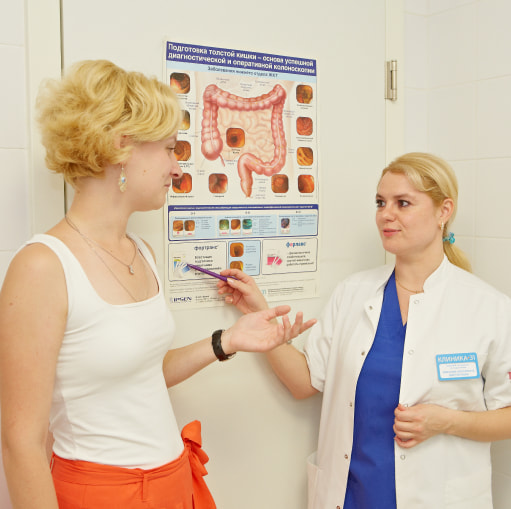
To ensure that the examination results are as informative as possible, endoscopy should be performed on an empty stomach. You should stop eating solid food 12 hours before the planned endoscopy. Also, stop drinking any liquids, even plain water, 2 hours before. This recommendation will allow you to perform an endoscopy of the stomach or different parts of the intestine without pain. Diagnosis or treatment in the clinic will be comfortable.
Depending on the condition of the gastrointestinal tract and symptoms, the doctor may prescribe bowel cleansing procedures before the endoscopy. You can take a recommended laxative or you may need to perform a cleansing enema. To ensure that the procedure is painless, the cleansing should be performed 5-6 hours after dinner. It is optimal to do an enema before bedtime. Such recommendations are given by the doctor if an endoscopy of the lower intestine is performed.
Price
Answers to popular questions
Are there any dietary restrictions the day before the procedure?
You need to prepare for any endoscopy, and gastroscopy is no exception. Before the study, you must limit your food intake. If gastroscopy is carried out in the morning, then the last meal is recommended in the evening, no later than 7 p.m., although fluid intake before bedtime is not limited. In the morning you need to be on an empty stomach. If you follow this recommendation, the stomach will be empty during the procedure, which will make it possible conduct informative research and obtain reliable results.
What about drinking?
If a person goes for a gastroscopy, it is better not to drink for several hours (at least 2 hours in advance), otherwise there will be too much liquid in the stomach, which will degrade visualization. In addition, during the study people can behave in different ways: accidentally burp, cough, or start pushing. Because of this, intra-abdominal pressure increases, and the contents of the stomach can pass from the esophagus through inhalation into the respiratory pathways, increasing the risk of complications.
Could the intestines “shrink with fear” and complicate the procedure?
Yes, it's possible. Under the influence of emotional factors, a spasm may occur. The intestine contracts. If this happens, we try to straighten it by introducing gas or water into the gap. We see this from the characteristic whitish mucous membrane of spasmodic folds of the intestine, which may complicate the examination. Getting worse visibility, a neoplasm or shallow ulceration may not be noticed behind the folds.
To prevent this from happening, it is worth premedicating or administering an antispasmodic, and even better, to avoid fear, a study should be conducted with intravenous anesthesia - during sleep.
How long does the procedure take?
Standard esophagogastroduodenoscopy takes 10-15 minutes.
What if you want to swallow during the procedure?
No need to worry about this. During the examination, the patient's head placed in such a way that saliva can passively flow through corner of the mouth. If a person swallows, he will feel the device and may reflexes arise. This is undesirable, but not scary. Procedure will continue when the patient calms down.
Can a painkiller pill taken per day affect the results of the study?
If the day before gastroscopy you had a headache and had to take a pill, this will not affect the study in any way.
The consequences of taking analgesics become visible if you take them regularly basis. In this case, during gastroscopy we often diagnose erosive and ulcerative changes in the gastric mucosa.
During a diagnostic study “in a dream” the patient is under the influence of an anesthetic, will it hurt afterwards?
If the intervention went smoothly and without complications, there should be no pain or discomfort.
But if there was increased intestinal tone, and the study was performed with the introduction air, the patient may wake up with a feeling of distension or bloating of the intestines. In our clinic we perform endoscopy using carbon dioxide (CO2), which quickly resolves, and discomfort after the study the patient does not feel it.
When can I eat after the procedure?
After gastroscopy without anesthesia, you can immediately drink and eat. If used lidocaine, it is recommended to wait 10-15 minutes until the local anesthesia.
